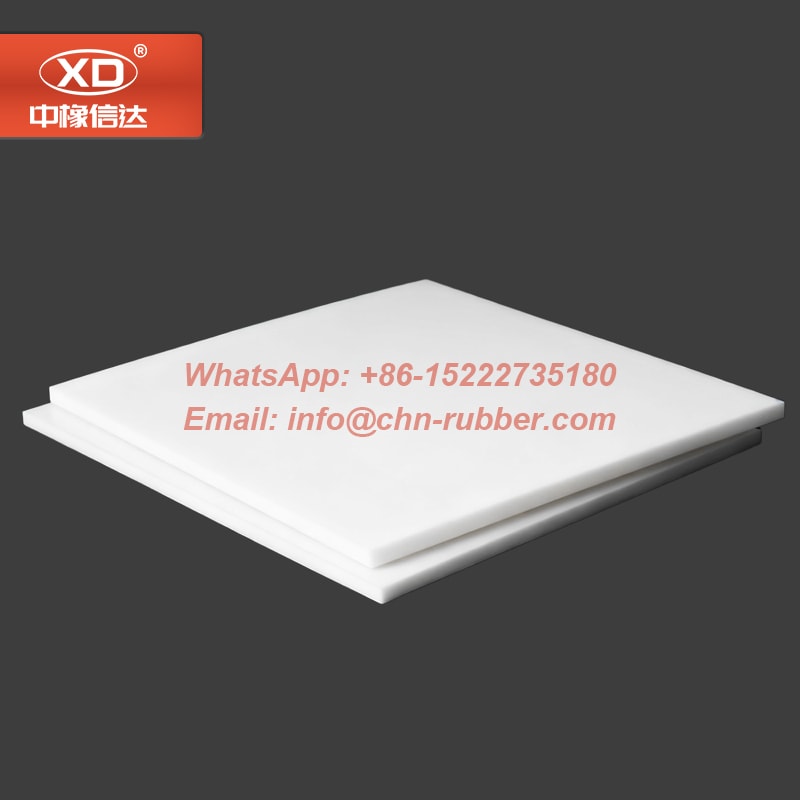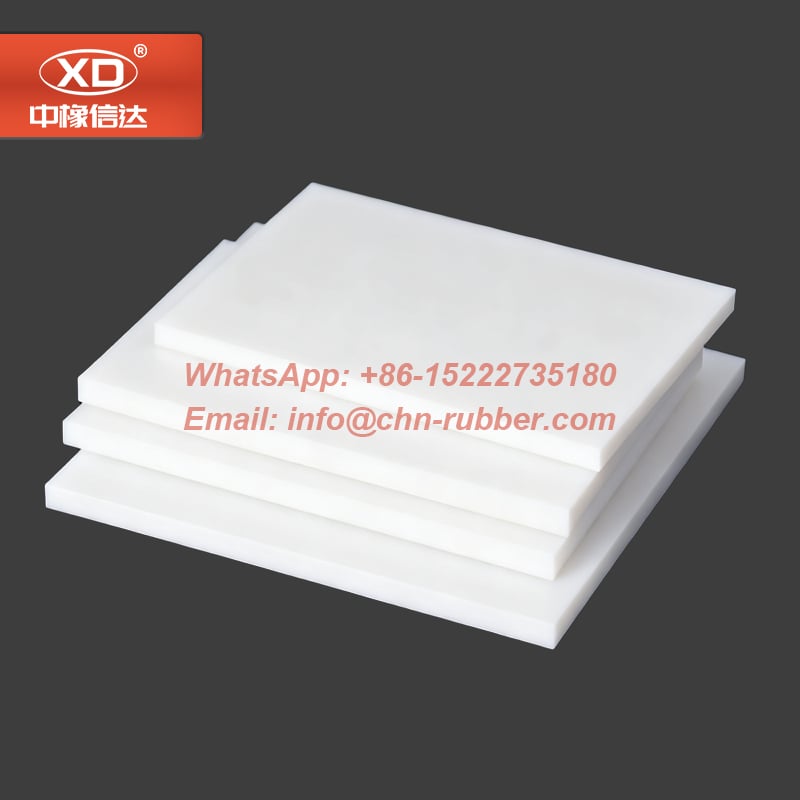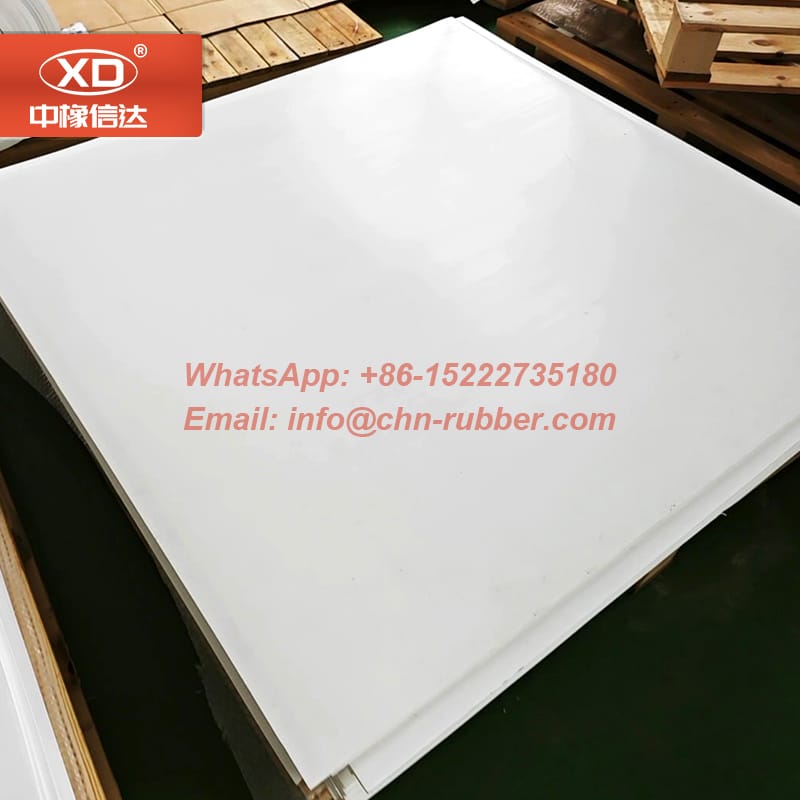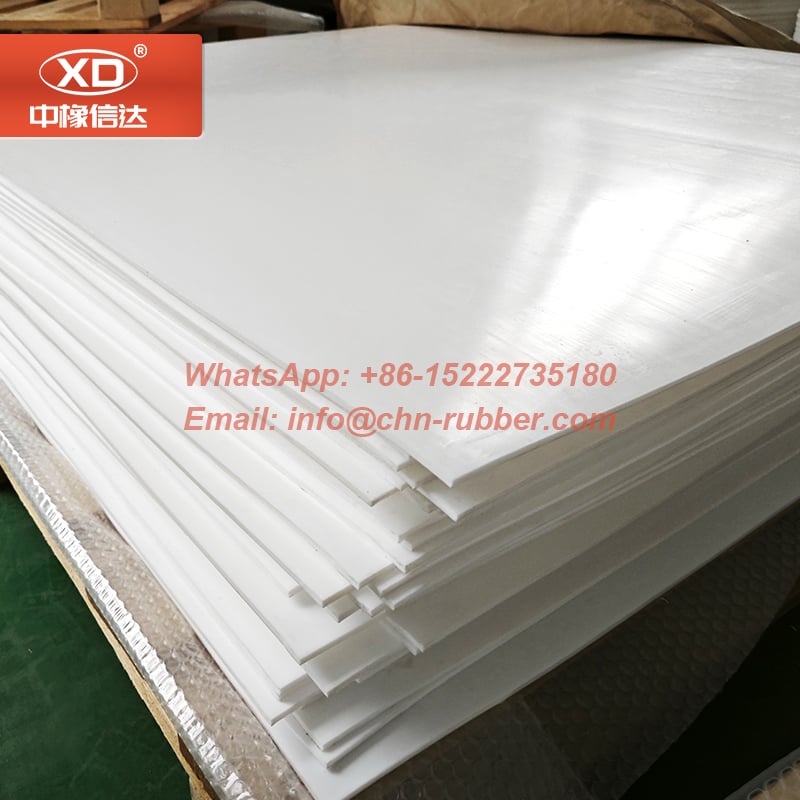Low friction PTFE slide bearing plates
PTFE slide bearing plates provide an ultra-low-friction surface designed to absorb movement, vibration, and thermal expansion in structural systems. Their stable, non-reactive nature ensures smooth sliding performance under heavy loads, making them reliable for bridges, industrial equipment, and architectural structures that require controlled motion with minimal maintenance.
Request a Sample and Quotation:
WhatsApp: +86-15222735180
Email: info@chn-rubber.com
PTFE slide bearing plates are engineered to deliver a durable, low-friction interface for structures and equipment that undergo constant movement, thermal displacement, or vibration. Manufactured from high-purity PTFE, the plates offer exceptional resistance to weather, chemicals, and moisture while maintaining a smooth, self-lubricating surface that performs consistently under substantial compressive loads. The material’s extremely low coefficient of friction allows steel or concrete surfaces to move freely without sticking or wear, ensuring predictable and controlled displacement in demanding environments.
These plates are offered in two categories to suit different performance requirements:
1. Virgin PTFE Slide Bearing Plates
Advantages
- 1. Extremely low friction coefficient, ensuring the smoothest sliding performance.
- 2. Fully resistant to chemicals, suitable for corrosive or high-purity environments.
- 3. No moisture absorption and excellent weather resistance, stable outdoors and in humid conditions.
- 4. Self-lubricating surface, eliminating the need for grease or external lubrication.
- 5. Non-abrasive to mating surfaces, protecting steel and concrete from wear.
Limitations
- 1. Lower load-bearing capacity, more prone to creep under heavy or continuous pressure.
- 2. Less wear resistance compared with filled PTFE in long-term sliding applications.
- 3. Dimensional stability decreases under prolonged mechanical load, requiring more frequent replacement in high-load systems.
- 4. Lower compressive rigidity, not ideal for major structural bearings or high-pressure movement joints.
Application Fields
- · Pipe support sliding pads in chemical and industrial plants
- · Structural sliding elements for HVAC and architectural assemblies
- · Expansion and movement points in building façades and glass structures
- · Light-duty machinery or equipment requiring ultra-low friction
- · Clean or corrosive environments such as pharmaceutical, food, and electronics industries
2. Filled PTFE Slide Bearing Plates
(e.g., glass fiber filled, carbon filled, graphite filled, mineral filled)
Advantages
- 1. Much higher load capacity than virgin PTFE, suitable for high-pressure systems.
- 2. Reduced creep deformation, maintaining shape and compression over long periods.
- 3. Superior wear resistance, ideal for repetitive or heavy sliding cycles.
- 4. Improved dimensional stability, enabling use in large structural displacement joints.
- 5. Higher scratch and compressive resistance, extending service life.
- 6. Better suited for heavy-duty structural bearings in civil and industrial engineering.
Limitations
- 1. Friction slightly higher than virgin PTFE, though still low compared with other materials.
- 2. Chemical resistance somewhat reduced depending on the filler type, but still strong overall.
- 3. Requires a smoother installation surface to fully achieve its enhanced loading performance.
Application Fields
- · Bridge slide bearings and expansion joints
- · High-load architectural structures (stadiums, terminals, high-rise buildings)
- · Heavy machinery foundation pads
- · Pipeline expansion and movement interfaces (oil & gas, refining, energy plants)
- · Cranes, lifting equipment, and mobile industrial platforms
- · Seismic isolation systems and displacement release structures






